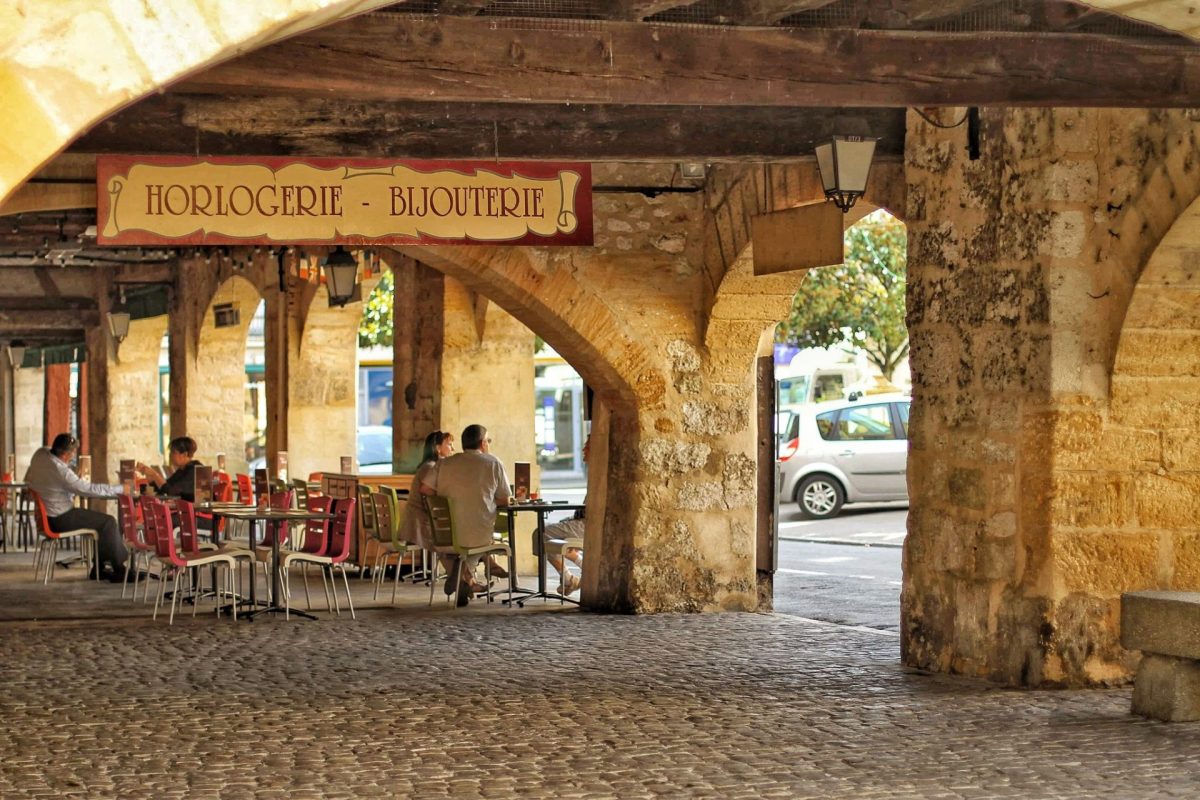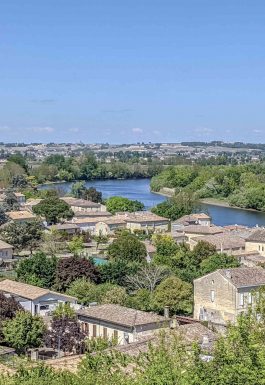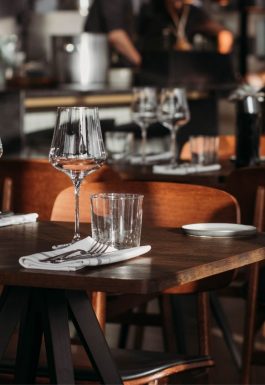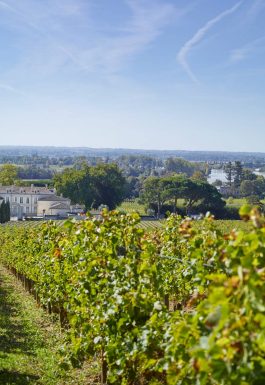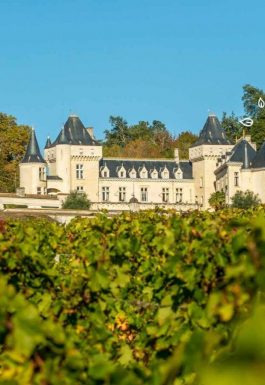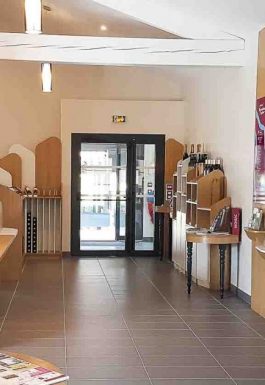Want to see all the facets of Grand Libournais? Follow us on this getaway between heritage, nature and famous vineyards.
Village of Asques
Overlooking the Dordogne on its right bank, Asques enjoyed prosperity in the XNUMXth century as a wine port. Listed in the inventory of picturesque sites in the Gironde, the village is located on a limestone spur overlooking meadows and vineyards. Attached to the church, a square has been set up to allow you to admire the view: at the foot of the limestone cliff, the nonchalant Dordogne comes to lick the houses of the port in a vast majestic curve and during high tides, the you can observe surfers on the wave of the Mascaret.
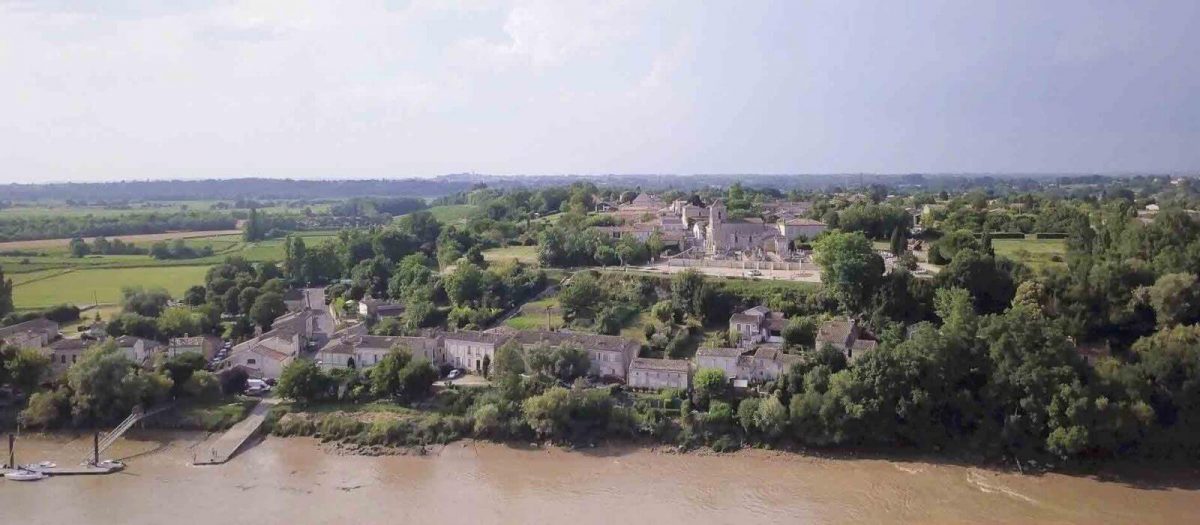
Castle of the River
Nestled between the hillsides and dominating the Dordogne valley, the Château de La Rivière is one of the architectural jewels of the Fronsadais. Located on the remains of a fortified camp built by Charlemagne in 769, the current Château dates from the 20th century and rests on an old stone quarry of more than XNUMXkm of gallery. Producer of red wines in the Fronsac appellation, of white and rosé wines in the Bordeaux appellation, Château de La Rivière is today the largest estate in the Fronsac appellation. Bed & Breakfasts, guided tours of stone quarries, wine tasting and international festival renowned annual: the doors of the castle are wide open to you!
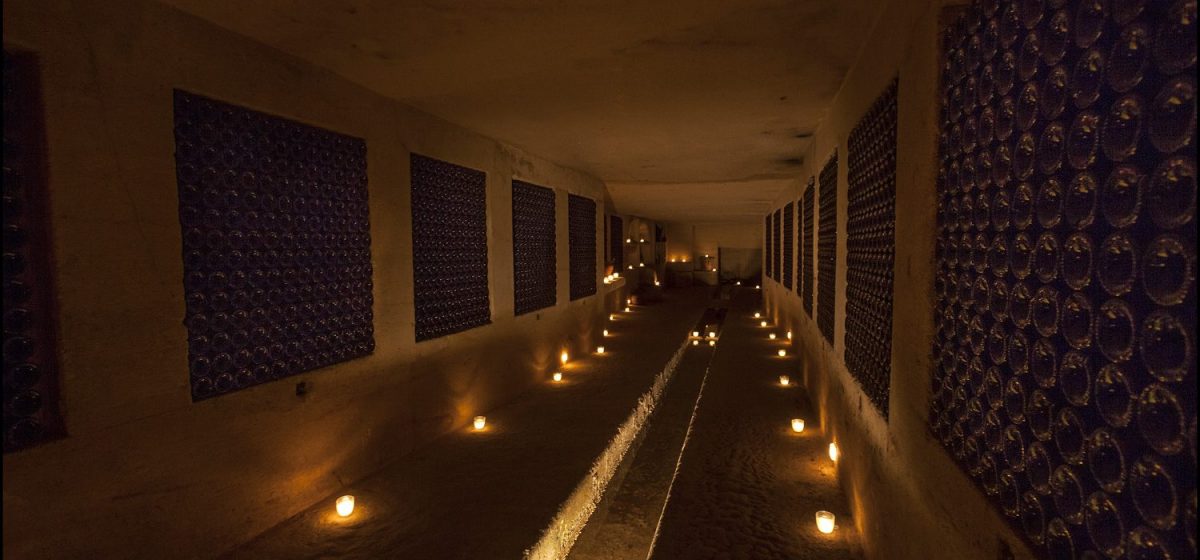
Bastide of Libourne
Libourne is a royal bastide, born in 1270 at the instigation of King Henry III of England. The Knight Sir Roger de Leyburn, newly promoted to the honorary rank of King's Lieutenant, was responsible for its construction in place of the former Gallo-Roman port of Condatis. He left her his name.
Over the centuries, Leybourn Frenchified to become Libourne. Located at the confluence of the Isle and the Dordogne, Libourne has the particularity of being the first maritime navigation port on the Dordogne almost 100 km inland!
This situation, unique in the world, favored its exchanges with the outside world and the development of a flourishing trade, of which wine was king. It was one of the most prosperous bastides in Aquitaine.
Born from a confluence, it itself became a confluence: of rivers, lands, languages and people.
The wine trade gave the Libournaise economy its letters of nobility in the Middle Ages. In the XNUMXth century and at the beginning of the XNUMXth century, the arrival of traders from Corrèze gave new impetus to trade related to the precious nectar.
For reasons of ease of loading and unloading the barrels, they decided to settle along the quays of Priourat which remains today the emblem of the Libournais trade. Its exceptional geographical location gives it a strategic location on the Dordogne for river tourism, welcoming tens of thousands of cruise passengers from all over the world every year. Libourne is also the vines in town! It is undoubtedly the only urban area in the world with two prestigious appellations: Pomerol and Saint-Emilion.
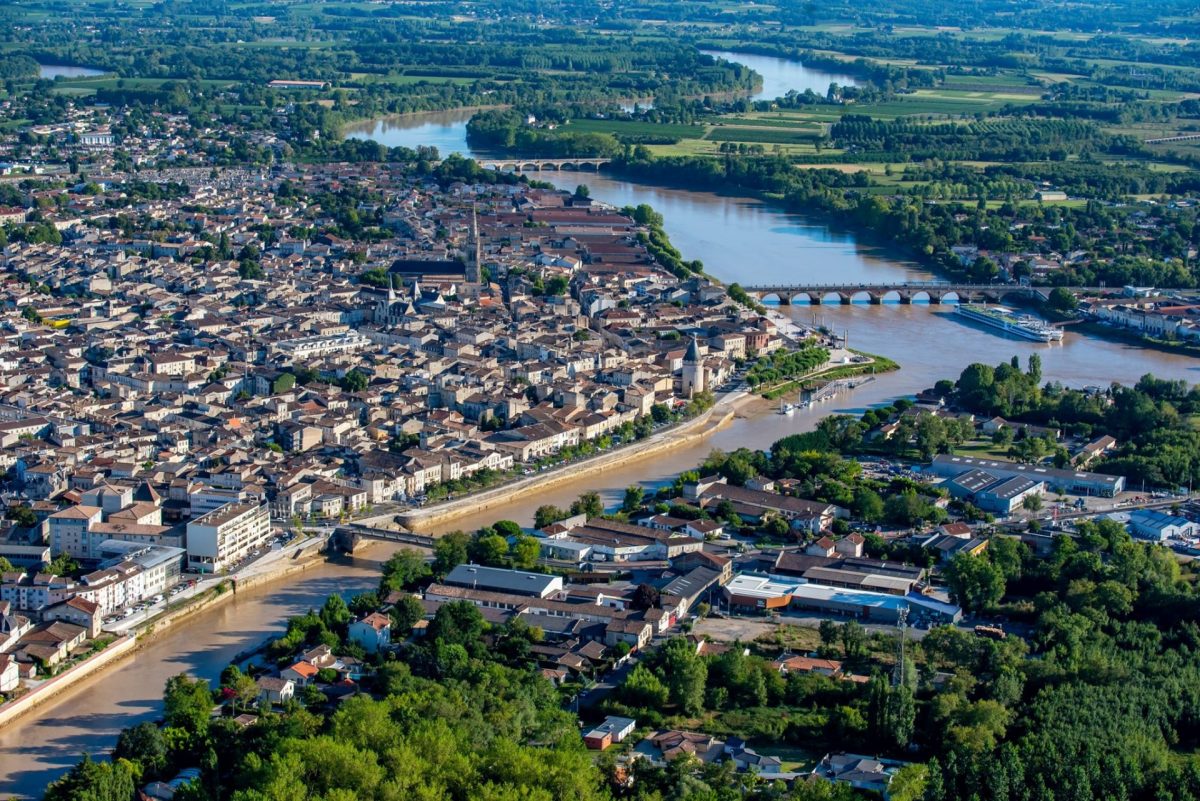
In the heart of the vineyard – Saint-Emilion
Recognized as a remarkable example of a historic wine-growing landscape which survived intact, in December 1999, the village of Saint-Emilion remains an essential stopover during your visit to Grand Libournais. This registration represents approximately 5 hectares of vines spread over the eight municipalities of the Jurisdiction of Saint-Émilion. Set off to discover the secrets of these vineyards, which benefit from a world-renowned appellation.
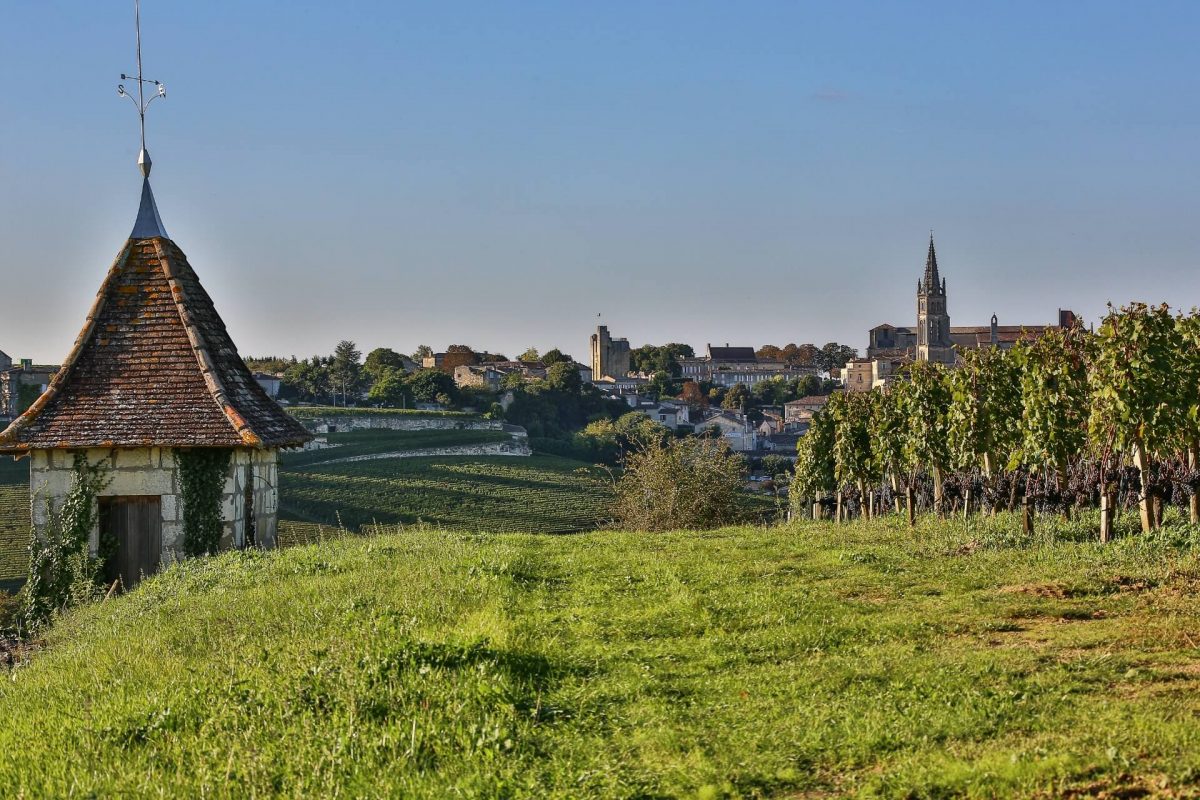
Porcheres mill
Nestled in its green setting on the banks of the Isle, the site of the Porchères mill will seduce and occupy the whole family for a day filled with memories. The site is one of the finest flour mills in Aquitaine open to the public. Listed as a historic monument, this site is the ideal place to spend an amazing day out with the family. As soon as you arrive, you can choose from the many activities offered by this exceptional site: guided tours, family workshops, waterbikes, BBQ boats... Take the time to get your hands dirty by taking part in the "Make your own bread" workshop. », then follow the guide through the twists and turns of the flour mill to understand the journey of the grain of wheat and its transformation into flour.
Let yourself be seduced by this flagship of the regional industrial heritage, to share a unique moment with your family.
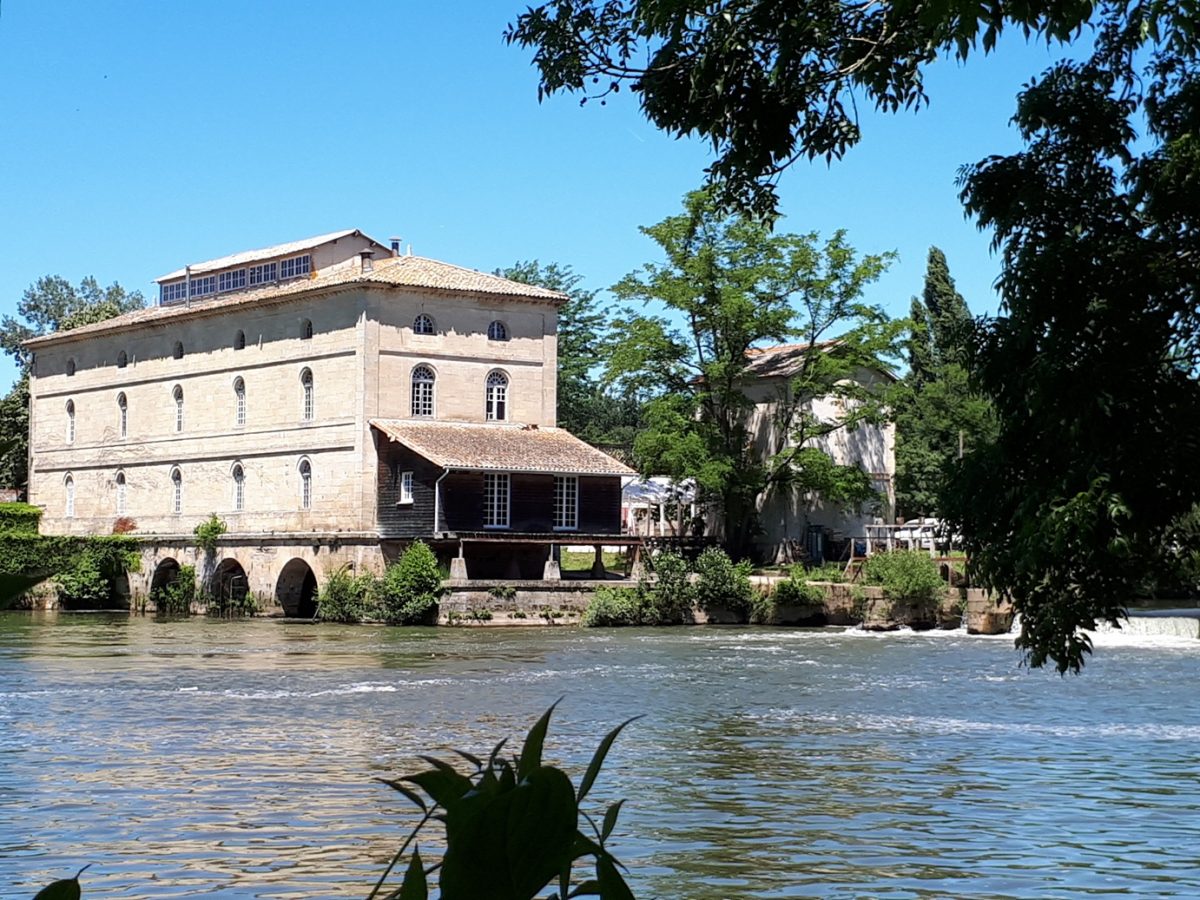
Heritage and history – Belvès de Castillon
The municipalities of Greater Saint-Emilionnais are full of historical and heritage treasures. The territory of Belvès was part of the seigniory of Castegens founded in the XNUMXth century by the powerful family of Grailly. A rural and wine-growing town, it is part of the “Castillon Côtes de Bordeaux” appellation. Belvès-de-Castillon is at the heart of the events that mark the end of the Hundred Years War. These major historical events are now found through the heritage: Castegens castle, Notre-Dame church and theatrical reconstruction of the battle of Castillon. An unmissable stopover for the curious and history buffs.
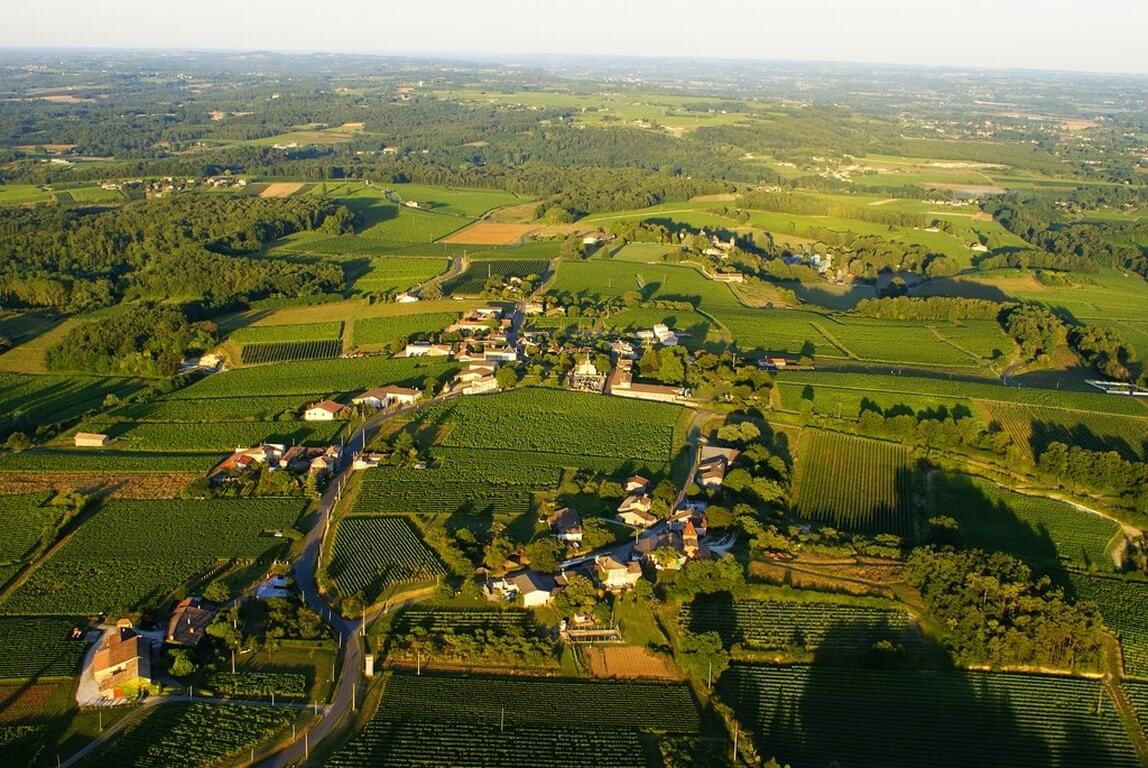
Cabara Village
The charming village of Cabara is located on the left bank of the Dordogne. It was an active port where fishermen thronged. Today he lives in the calm and beauty of the river.
On the hillsides, you can see the Château de Blagnac, remodeled in the XNUMXth century, whose lords exercised their jurisdiction over the surrounding parishes in the Middle Ages (this château, which is private property, is not open to visit).
In Haut Cabara there is a remarkable cemetery cross which dates back to the XNUMXth century. It used to stand in front of the village's Romanesque church (destroyed at the end of the XNUMXth century). At the same time, a new parish church was built in Lower Cabara. Dedicated to Notre-Dame, it was designed in the neo-Gothic style.
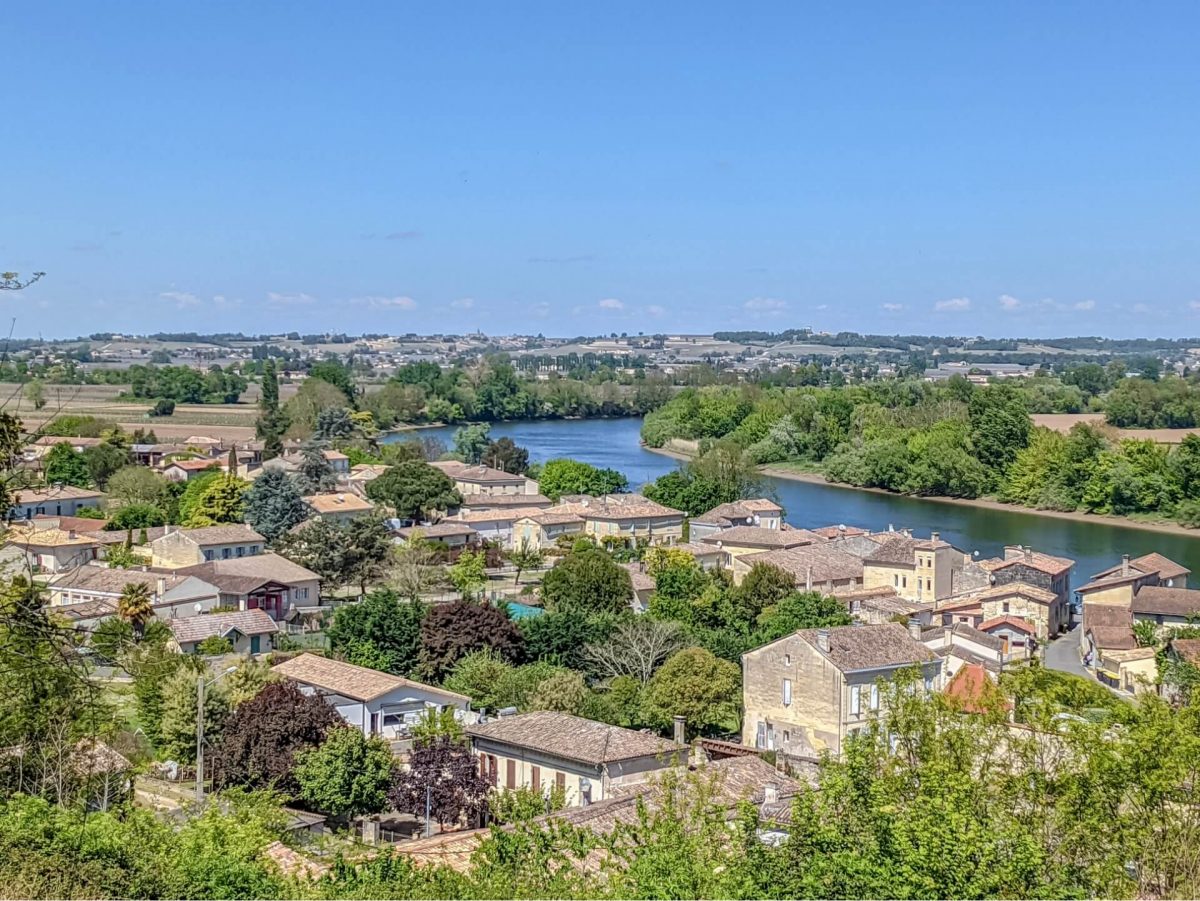
Village of Gensac
At the heart of a landscape of hills and vineyards, Gensac is one of the architectural highlights of Grand Libournais. Classified as an "old village", a natural bastion overlooking the valleys of the Durèze and the Dordogne, Gensac offers the opportunity to rediscover the charm of a small town of yesteryear.
The cobbled streets, the remains of ramparts, the restored medieval houses, are all testimony to this. Gensac is also a lively village: in addition to the charm of its old stones, you will appreciate its many traders and craftsmen.
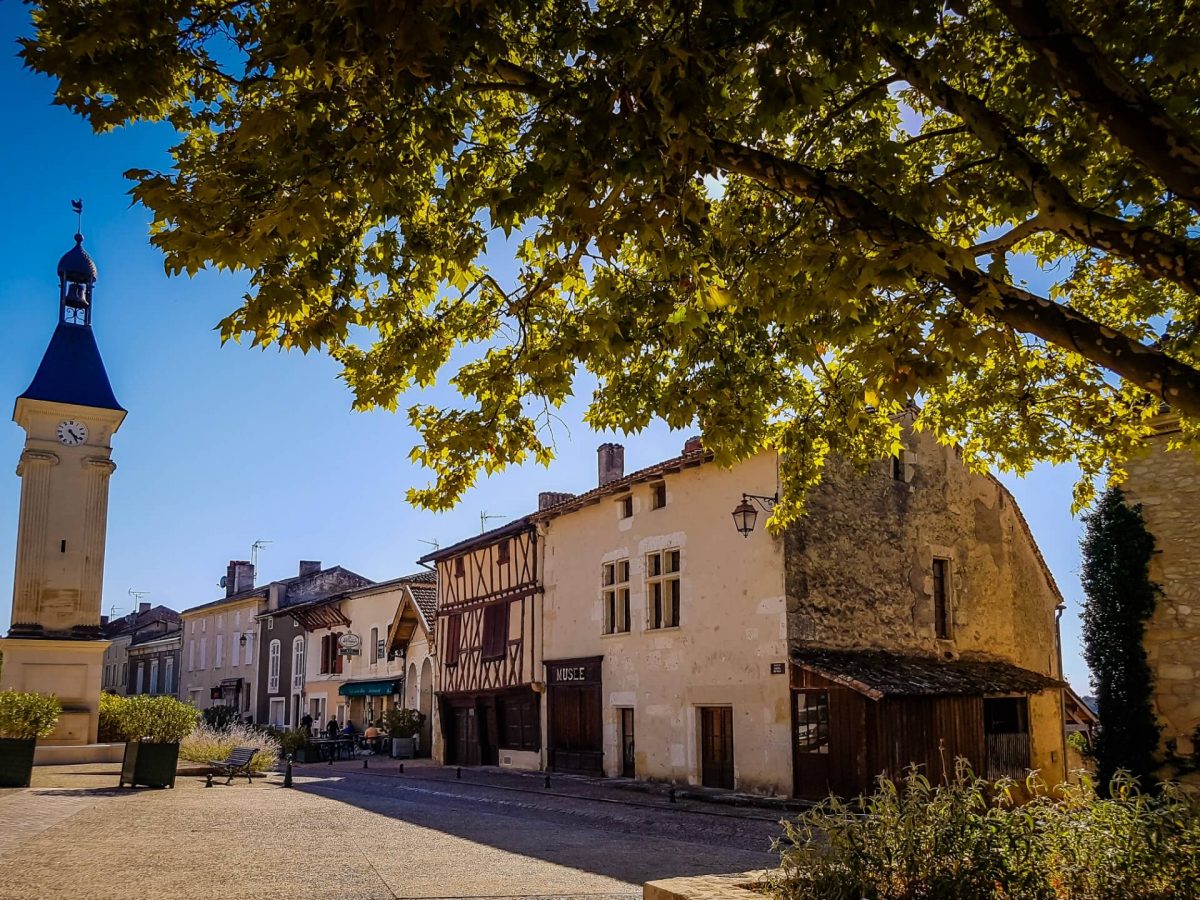
Bastide of Pellegrue
Pellegrue, unlike Sainte-Foy-la-Grande, is not a "newly built" bastide. It was built on or near an earlier medieval town. Thus, there was a castle (castrum) attested in 1242 well before the creation of the bastide. The town developed around the castle, which no longer exists today. The current coat of arms of the town of Pellegrue represents "a silver crane holding in its dexter a golden vigilance". Vigilance was a pebble preventing the animal from falling asleep. Legend says that the crane would have played a role in saving the city.
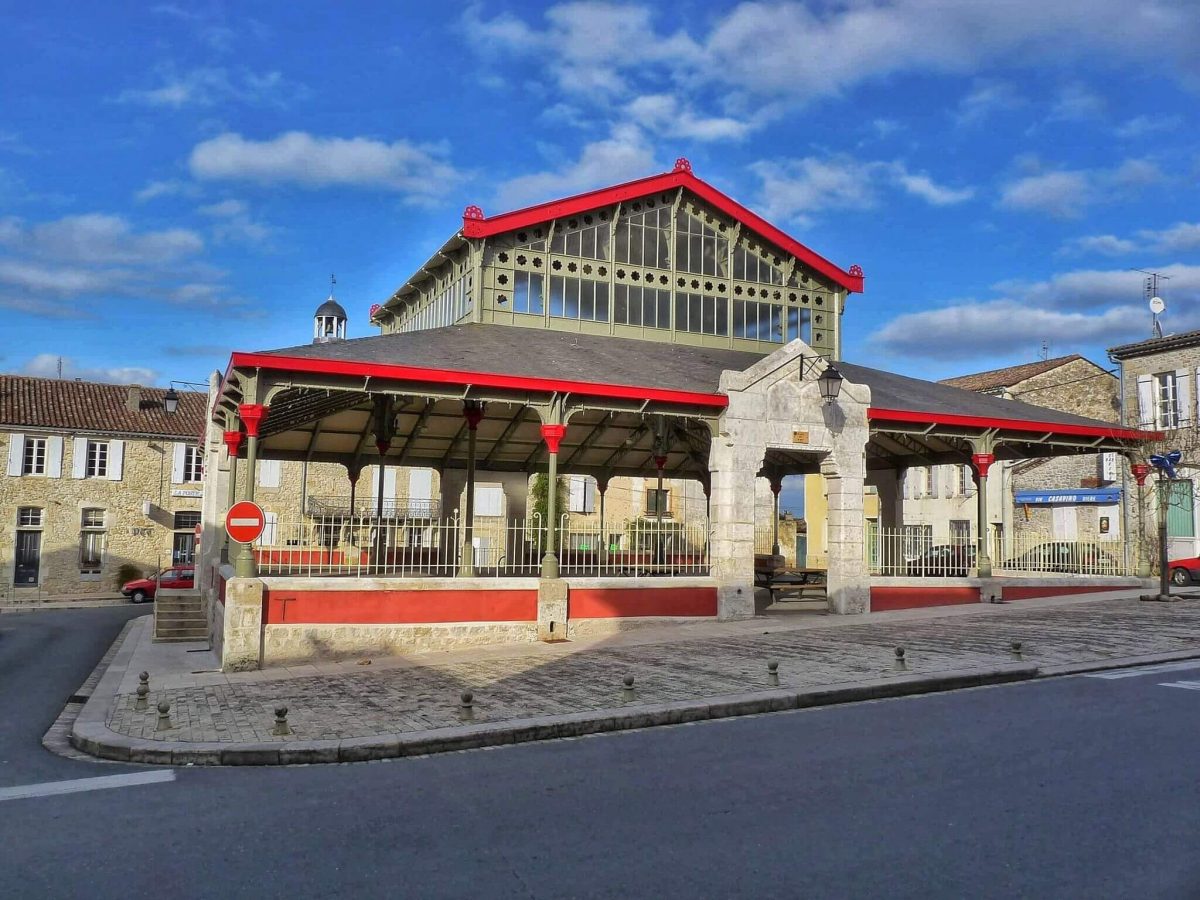
Bastide of Sainte-Foy-la-Grande
Sainte-Foy-la-Grande is the oldest fortified town in Gironde created in 1255 by Alphonse de Poitiers. It is also one of the smallest municipalities in France. The presence of the Dordogne river allows it a prosperous situation thanks to the transport of wine on barges. Sainte-Foy is original with its orthogonal plan, divided by straight streets which intersect at right angles. The eccentric square is surrounded by covered areas (or arcades) which remain on 3 sides. La Bastide is also on the way to Santiago de Compostela with the Via de Vézelay. Finally, every Saturday takes place the market, one of the most beautiful in Gironde.
